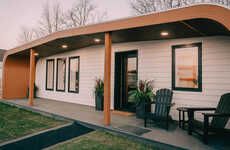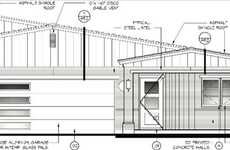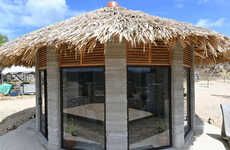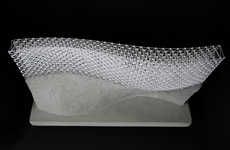
This Commerical Building Was Designed Using 3D Printing Technology
Katherine Pendrill — September 10, 2015 — Art & Design
References: treehugger & 3dprint
Lewis Yakich recently designed the world's first 3D-printed hotel. Although 3D printing has been used to construct everything from remote cabins to luxury villas, few designers have used the technology for commercial purposes. This new hotel provides an example of how 3D printing can be uses to build commercial structures.
The Lewis Grand Hotel is located in the Philippines and is considered the world's first 3D-printed commercial building that is fully operational. The new structure is an extension of the existing hotel and features a two bedroom villa suite that is complete with a living room and a 3D-printed Jacuzzi tub. The suite took about 100 hours of print time to complete and was slow to assemble. Despite the lengthy assembly time, the entire process cost 60 percent less than traditional construction methods.
The 3D-printed hotel suite demonstrates that this particular construction method could be perfect for designing low-income residences and other commercial buildings.
The Lewis Grand Hotel is located in the Philippines and is considered the world's first 3D-printed commercial building that is fully operational. The new structure is an extension of the existing hotel and features a two bedroom villa suite that is complete with a living room and a 3D-printed Jacuzzi tub. The suite took about 100 hours of print time to complete and was slow to assemble. Despite the lengthy assembly time, the entire process cost 60 percent less than traditional construction methods.
The 3D-printed hotel suite demonstrates that this particular construction method could be perfect for designing low-income residences and other commercial buildings.
Trend Themes
1. 3D Printing in Commercial Construction - The world's first 3D-printed hotel suite showcases the potential for using 3D printing in commercial building projects.
2. Cost-effective Construction Methods - The 3D-printed hotel suite proves that utilizing 3D printing technology can result in construction projects costing 60 percent less than traditional methods.
3. Expanding Applications of 3D Printing - The use of 3D printing in constructing commercial buildings opens up new possibilities for designing low-income residences and other structures.
Industry Implications
1. Construction - The construction industry can explore the disruptive innovation opportunities presented by incorporating 3D printing into commercial building projects.
2. Architecture - Architects can leverage 3D printing technology to revolutionize the way commercial structures are designed and constructed.
3. Real Estate - The real estate industry can benefit from the cost-saving advantages of 3D printing technology in developing affordable housing solutions and commercial properties.
5.3
Score
Popularity
Activity
Freshness























